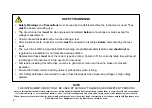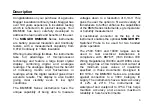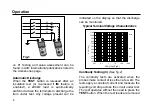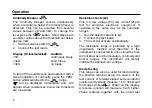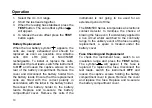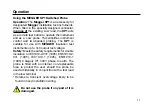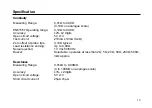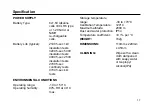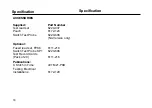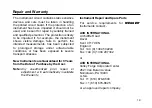
Operation
alternatively the
key can be re-pressed.
Insulation Tests (M
Ω
)
(See fig. 1)
The insulation tests apply a known voltage to
the circuit under test and measure the resulting
leakage current. The circuit under test
must be
completely de-energised and isolated
before
test connections are made.
Insulation tests are only initiated when the
TEST
button is pressed.
1. Set the range switch to the test voltage
required.
2. Connect the test leads, first to the
instrument, and then to the isolated item
under test.
3. Press
the
TEST
button to activate the test
voltage. Take the reading.
4.
Release the
TEST
button at the end of the
test.
5. Any capacitive circuits charged during a test
will automatically discharge. If significant
voltage remains the voltage warning will
occur and the voltage present displayed.
6. Remove the test leads only when no
voltage is indicated.
Locking Test Button (ltb)
When it is desired to do a long insulation test,
the test can be ‘locked on’ by pressing the
key while the test button is held down.
The warning
will appear on the display and
both buttons may be released whilst the test
continues. The next press of the test button will
terminate the test.
Note: There is a short delay on the first operation
of ‘1000V’ range, each time the range is
selected. This is to prevent accidental
application of 1kV.
Polarisation Index Testing
Polarisation Index (PI) is the term applied to the
Dielectric Absorption Ratio when resistance
values are measured after 1 minute and again
after 10 minutes. Polarization Index is then the
resistance value after 10 minutes divided by the
resistance value after 1 minute. The test can be
run at any voltage. More detailed information
5
∼
Summary of Contents for BMM500 Series
Page 3: ......
Page 81: ...Notes 78...
Page 82: ...Notes 79...
Page 83: ...Notes 80...
Page 84: ......





